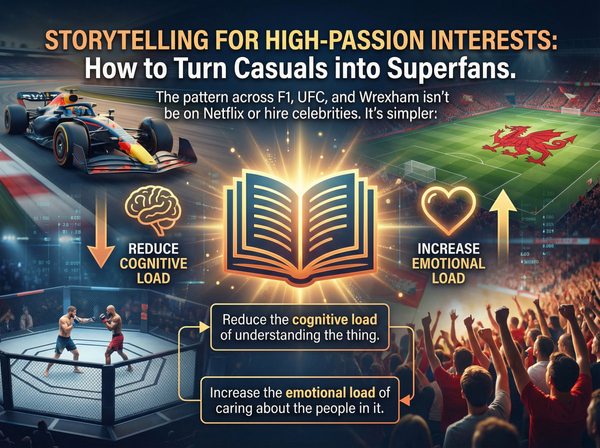The Big Five Personality Traits
Ever wonder why some sales pitches land perfectly while others fall flat? Or why certain marketing campaigns resonate with one group but completely miss another?
Imagine having a clearer roadmap to understanding your prospects and customers, allowing you to tailor your approach with precision. Often, the answer lies in understanding the fundamental building blocks of human behavior: personality.
What better way to connect than by understanding the core drivers behind their decisions, preferences, and motivations? That's where the Big Five personality traits come in.
The Big Five, also known as the Five-Factor Model (FFM), is a widely accepted framework in psychology that categorizes human personality into five broad dimensions. While each individual is a unique blend, grasping these traits can provide invaluable insights for tailoring your approach, refining your messaging, and ultimately, boosting your results.
Let's dive into the Big Five and how you can leverage them in your sales and marketing efforts:
1. Openness to Experience (O)
What it is: This trait describes a person's level of imagination, curiosity, creativity, and willingness to try new things.
In Sales:
- High Openness: These individuals are often early adopters, enjoy innovative solutions, and are receptive to new ideas. Focus on the novelty, the cutting-edge features, and how your product or service can introduce them to new possibilities.
- Example: When selling software, highlight new AI-powered features or how your platform integrates with emerging technologies.
- Low Openness: Prefer established methods, familiar routines, and proven solutions. Emphasize reliability, consistency, and how your offering integrates seamlessly with their existing processes without disruption.
- Example: Emphasize the long-standing track record of your product, its compatibility with existing systems, and the smooth transition process.
In Marketing:
- High Openness: Target with campaigns highlighting innovation, unique benefits, and aspirational outcomes. Think "be the first," "revolutionary," or "unlock new potential."
- Example: An ad campaign for a new gadget showing a diverse group of people experiencing futuristic scenarios.
- Low Openness: Focus on testimonials, case studies, and messaging that emphasizes stability, safety, and a track record of success. "Trusted by many," "proven results," and "reliable performance" will resonate.
- Example: A marketing campaign for a financial service emphasizing its stability, decades of trusted client relationships, and consistent returns.
2. Conscientiousness (C)
What it is: This trait reflects a person's level of organization, responsibility, discipline, and goal-oriented behavior.
In Sales:
- High Conscientiousness: Value efficiency, clear processes, and demonstrable results. Provide detailed information, actionable steps, and highlight how your solution helps them achieve their goals in an organized and effective manner. Be punctual and prepared.
- Example: Present a detailed project plan with clear milestones and expected ROI figures.
- Low Conscientiousness: May be more spontaneous and less focused on rigid structures. Emphasize ease of use, convenience, and how your solution simplifies complex tasks. Keep presentations concise and high-level.
- Example: Focus on a quick setup process and "set it and forget it" benefits, showing how your product removes burdens.
In Marketing:
- High Conscientiousness: Respond to messaging that emphasizes productivity, efficiency, measurable ROI, and problem-solving. Use phrases like "optimize your workflow," "achieve your targets," or "streamline your operations."
- Example: A landing page highlighting "5 Steps to Double Your Productivity with Our Tool."
- Low Conscientiousness: Focus on immediate gratification, ease of implementation, and how your product or service makes life simpler. Think "effortless," "quick setup," or "instant results."
- Example: An ad with a headline like "Get Started in 5 Minutes – No Training Required!"
3. Extraversion (E)
What it is: This trait indicates how outgoing, sociable, energetic, and assertive a person is.
In Sales:
- High Extraversion: Enjoy social interaction, energetic discussions, and often make quick decisions. Build rapport through friendly conversation, listen actively, and be prepared to engage in a dynamic dialogue. They might appreciate group presentations or collaborative problem-solving.
- Example: Start with some light, engaging conversation before diving into the pitch; be prepared for a lively Q&A.
- Low Extraversion (Introversion): Prefer more quiet, thoughtful interactions. Provide detailed information in advance, allow them space to process, and respect their need for less social stimulation. Focus on facts and benefits rather than intense personal interaction.
- Example: Send a comprehensive pre-meeting brief and follow up with a concise summary, allowing them time to review privately.
In Marketing:
- High Extraversion: Appeal to their desire for connection and excitement. Use energetic language, strong calls to action, and visuals featuring people interacting. Social media campaigns, community building, and events will resonate.
- Example: A vibrant ad showing people laughing and interacting at a conference, promoting an upcoming industry event.
- Low Extraversion: Focus on detailed content, case studies, and opportunities for independent research. Webinars, whitepapers, and thoughtful blog posts will be more effective than highly social campaigns.
- Example: An email campaign promoting an in-depth whitepaper on complex industry trends, ideal for solitary reading.
4. Agreeableness (A)
What it is: This trait measures how cooperative, compassionate, kind, and trusting a person is.
In Sales:
- High Agreeableness: Value harmony, collaboration, and building positive relationships. Emphasize shared goals, mutual benefit, and how your solution fosters cooperation. Be genuinely helpful and empathetic.
- Example: Frame your pitch around a partnership: "How can we work together to achieve your goals?"
- Low Agreeableness: May be more skeptical, competitive, and direct. Focus on objective facts, clear benefits, and how your solution gives them a competitive edge. Avoid overly emotional language and stick to the business case.
- Example: Directly address their current challenges with data-driven solutions that prove your superior performance over competitors.
In Marketing:
- High Agreeableness: Respond to messaging that highlights community, social responsibility, customer service, and shared values. Use phrases like "join our family," "together we can," or "making a difference."
- Example: A brand campaign emphasizing its charitable contributions or ethical sourcing.
- Low Agreeableness: Focus on results, unique selling propositions, and how your product or service helps them win or stand out. Highlight exclusivity, superior performance, or a distinct advantage.
- Example: An ad stating "Outperform Your Competitors with Our Advanced Analytics."
5. Neuroticism (N) (Often referred to as Emotional Stability in a positive sense)
What it is: This trait relates to emotional stability, anxiety, vulnerability, and moodiness. (Lower neuroticism indicates higher emotional stability).
In Sales:
- High Neuroticism: May be more prone to worry, risk aversion, and stress. Focus on reassurance, minimizing perceived risks, and highlighting the stability and security of your solution. Provide clear guarantees and strong support.
- Example: Offer a robust service level agreement (SLA), a comprehensive onboarding process, and emphasize your reliable support team.
- Low Neuroticism (High Emotional Stability): More calm, confident, and resilient. They may be more open to taking calculated risks. Focus on the growth potential, future opportunities, and long-term gains without excessive hand-holding.
- Example: Discuss bold strategic moves your solution enables, focusing on potential upside and market leadership.
In Marketing:
- High Neuroticism: Messaging should address pain points directly and offer clear solutions that alleviate anxiety. Emphasize safety, reliability, ease of mind, and strong customer support. Think "peace of mind," "worry-free," or "built to last."
- Example: An insurance ad focusing on the security and comfort of knowing your family is protected.
- Low Neuroticism: Focus on aspirational goals, exciting possibilities, and how your product or service enables progress and success. Use empowering language and highlight opportunities for growth and achievement.
- Example: A campaign for a business coaching service showing successful entrepreneurs achieving their dreams, emphasizing ambition and breakthrough results.
The Power of Observation
While understanding these traits is powerful, remember that they are a framework, not a rigid set of rules. People are complex and dynamic, and individuals will exhibit a blend of these traits to varying degrees. The real magic happens when you combine this knowledge with keen observation and active listening.
Pay attention to:
- Their questions: Do they focus on details (Conscientiousness)? New features (Openness)? Or social proof (Extraversion/Agreeableness)?
- Their communication style: Are they direct and factual (low Agreeableness)? Or warm and personable (high Agreeableness)?
- Their priorities: Do they prioritize speed and innovation (Openness)? Or security and stability (Neuroticism)?
By subtly adapting your sales conversations and tailoring your marketing messages to resonate with these underlying personality dimensions, you'll build stronger connections, address core needs more effectively, and ultimately, convert more leads into loyal customers.
Keep Crushing!
- Sales Guy


